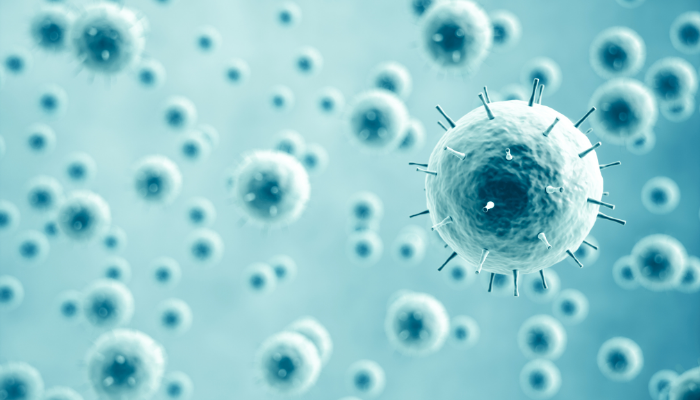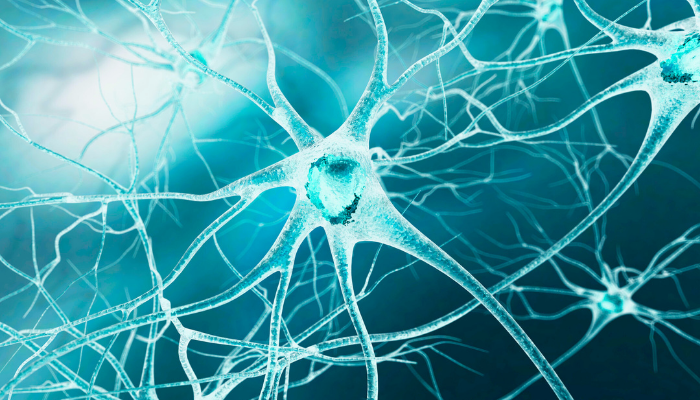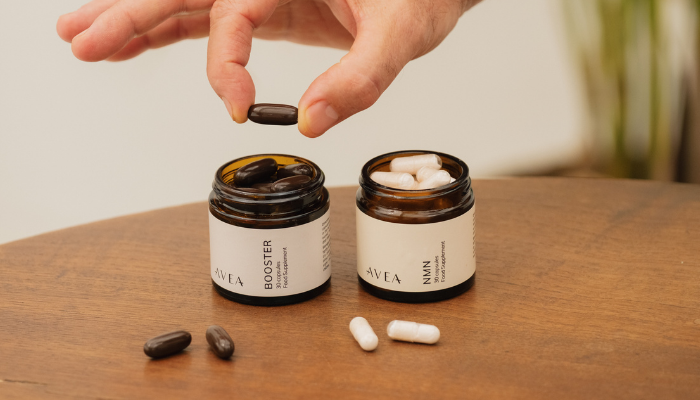You’ve been lied to. The key to health and longevity, is to actually get out of your comfort zone. But it’s not a one-size-fits-all situation when it comes to fasting. Did you know that most of the advices online on intermittent fasting only applies to the male body?
Fasting works differently at different stages of a woman’s menstrual cycle. If you want to understand how to reap your body’s potential, you have to start with (1) understanding when to fast, how to eat, and when to exercise during each phase of the menstrual cycle.

This Avea article dives into the research provided by world-renowned expert in fasting and women’s health, Dr. Mindy Pelz. Take advantage of her valuable insights and practice advice from the fasting guru herself.
In this article
Free guide to reverse your biological age

- Master the science of rejuvenation.
- Apply proven tips to turn back the clock.
- Transform your health with top longevity specialists.
Who is Dr. Mindy Pelz?
Dr. Mindy Pelz, a renowned expert in women’s health, is dedicated to inspiring women to trust and understand their bodies. Amongst her esteemed clientele are celebrities such as LeAnn Rimes, Danica Patrick, and influencer Jesse Itzler.
She has achieved bestseller status with her books “Fast Like a Girl,” a 2023 top release from Hay House Publishing, and “The Menopause Reset.”
Her podcast, “The Resetter Podcast,” consistently ranks in the top 20 U.S. science podcasts on Apple and features prominent guests like LeAnn Rimes, Danica Patrick, Lisa Bilyeu, and many more. Her YouTube channel boasts an impressive 60 million lifetime views. Dr. Pelz’s academic credentials include a Bachelor of Science from the University of Kansas and a Doctor of Chiropractic degree.
The science of fasting
Fasting has been shown to be an incredible healing tool, and both men and women should be exploring all aspects of fasting. Much like sleep, it’s a period of ‘’deprivation’’ that we all need.
It is intimately connected to nutrition. Tapping into our body’s nutrient-sensing networks through fasting, can unlock a wealth of benefits, from weight loss to improved insulin sensitivity, as well as biological age reversal.
This is because when your body is deprived of nutrients and energy, several stress response pathways are activated, which can improve cellular health and longevity.
Learn how about the general types of fasting methods here.
Hormonal differences in fasting
Men hormonally work off a 24-hour system, and they have one hormone that they have to focus on, and that’s testosterone. Testosterone comes in every 15 minutes, all hormones pulse but for men it’s like every 15 minutes they’re getting another dose and another dose of testosterone and testosterone will go up into their brains and convert into estrogen so they only need to focus on one, and they need to think about it in a 24-hour period.
Women on the other hand have 3 sex hormones that run us:
- estrogen
- progesterone
- testosterone
The unique rhythms of a woman’s body
Women don’t work off a 24-hour system. They work off a monthly system and these 3 hormones are pulsing in at different times throughout our menstrual cycle, and here’s the tricky part– All the 3 hormones want something a little different when it comes to both food and fasting!
For Dr. Mindy Pelz, she wants us to see fasting for women as a flexible tool. She suggests you find your own rhythm, just like how each and every one of us women, our body is built off rhythm. ‘’I don’t want to see women get rigid with the fasting ideas. I want women to be curious and understand how each one of these fasts work for them’’.
And for that, you need to understand your hormones.
The female hormones
Let’s have a look at estrogen and progesterone.
- Estrogens comes in, in the beginning half of the menstrual cycle.
- Progesterones coming in the end half of the cycle.
These hormones are like sisters. Whilst they’re in the same hormone family, they have huge differences in their personalities.
Dr. Mindy Pelz’s approach to fasting for women
Female hormones in a nutshell
Estrogen is going to love when you fast. Fasting allows you to keep your glucose and insulin low, and estrogen loves it. It is very forgiving of cortisol– your stress hormone. So, if cortisol spikes, which it does with fasting, just like it does with exercise, estrogen doesn’t care.
But progesterone feels quite the opposite. Progesterone prefers when your glucose levels are higher, which is why you might be craving carbs or sugary treats, a week before your cycle.
See, it’s not your lack of discipline. It’s literally your biology. As your progesterone levels build up, you’ll have a natural desire to eat more carbs. In this time of your cycle, when cortisol levels goes high, progesterone gets shy. Meaning, if you’ll have a lot of cortisol (aka stress), progesterone will go away.
A good metaphor could be estrogen being the extrovert who loves being the party girl, dancing, and talking to everyone. Whilst progesterone is the introvert who is better left on the couch and talking with her preferred friends. That’s how our female body is designed.
Flexible fasting in women
For women, Dr. Mindy Pelz outlines 6 different fasting methods, all based on science. These are practices shown to work clinically in her research, and also worldwide within her online community, where millions of women have joined the trend.
There are 2 different ways our body makes energy:
- from the foods we eat.
- in the absence of food.
After your blood sugar spikes from your last meal, it takes anywhere from 8 to 12 hours to start to move you from a sugar burner to a fat-burning energy system.
So now, you’re working off a different system. The 12-hour, 12–13 hours is what we consider intermittent fasting.
Then, most people are officially in this state of fat-burning, and we’re starting to see inflammation come down, growth hormone go up, a little bit of testosterone kick in, so the body goes into a healing state around 12 hours.
13-15 is a sweet spot, according to Dr. X. It’s recommend for women to perform such type of fasting on a sem-regular basis, by timing it according to your cycle.
About 17 hours without food, you’re still in this healing, fat-burning state, your body’s going to go into autophagy. And if you think about it from the intelligence of the body, what it’s doing is it’s saying, “Hey, blood sugar hasn’t come in, nutrients haven’t come in, there seems to be a mini-crisis here.”

But don’t be concerned about that word, because it’s a hormetic stress. Your body has started working to get itself more efficient and stronger.
Once you hit the 17 hours mark, your body clicks into autophagy. This is a process where your cells start to get rid of your ageing and dysfunctional, disease-producing cells.
Those get sloughed off, new cellular parts regenerate. Toxins, viruses and bacteria are pushed out, and your trillions of cells start to become better versions of themselves.
At 24 hours, your whole gut starts to reset.
Intestinal stem cells come in and will reset your whole microbiome. So you can really overturn any years of birth control or antibiotics or steroid use or poor diet. ‘’We can see a whole change in the gut at 36 hours’’, she says.
The body goes, “Okay, this has been a long time, there’s been no food, I better go find what I stored years ago,” and it starts to break fat down at a faster rate. So I call it the fat-burning reset. It’s a great one for unsticking weight loss.
At 48 hours, the whole dopamine system gets rebooted. Because if you think about it, now the intelligence of the body is like, “Hey, I need you clear, I need you motivated, I need you happy so you can go find food.”
So what ends up happening is you reboot the whole dopamine system, plus you get new dopamine receptor sites that open up. So that you’re, in all to save your life, because your body’s going, it needs to go search for food, but those new receptors are there once you bring food back into the equation.
At 72 hours, your whole immune system gets rebooted.
Most people when they go into fasting, they think that they’re going to die, but that’s only like micro-dosing.
You basically just need to create a bit of a hormetic stress on your body so that it becomes stronger. You can really maximise healing in a way that we have never seen before.
Practical fasting advice for different groups
- If you have an eating disorder, don’t take the fasting journey by yourself. Get a health coach, psychologist, a doctor. Whoever you prefer, but have a professional, help you walk that path with you.
- Second, fasting is NOT your tool if you’re pregnant. There are other great tools, like focus on your microbiome because you’re going to pass that down to your child. So focus on eating foods that support a healthy microbiome. And then once you deliver, then you can move into low-level fasting.
- Last, if you’re a nursing mom, you do not fast more than 15 hours. Once you go over 15, you’ll stimulate autophagy, a process where your cells will get rid of very dysfunctional cells that are packed with viruses and bacteria and heavy metals and toxins. Those waste products go into your lymph system, which goes into the milk. End result? It goes into your baby. So you want to fast, choose a 13-hour one.
Women are currently in an evolutionary mismatch right now with their hormones. The modern world is actually destroying the female body quicker than it’s destroying the male body, but it’s both of us.
Dr. Mindy Pelz.
Why is fasting hard?
For those who find it challenging to start their day without breakfast or struggle with low blood sugar, it’s important to understand that there’s no scientific evidence to suggest constant eating improves metabolism.
In fact, fasting, an ancient healing tool present in various cultures and religions, offers the opposite effect.
It’s about retraining your body, which can initially be uncomfortable, similar to the discomfort experienced in cold therapy or gym training. Over time, your body adapts and begins to heal.
The modern, Western lifestyle, with its easy access to food and the prevalence of processed options, often contradicts the evolutionary design of our body.
Our primal ancestors, equipped with the same physical makeup as us, didn’t have constant food availability. They evolved to be stronger and more resilient in the absence of food – a concept known as the Thrifty Gene Hypothesis.
Continuous eating goes against this genetic predisposition, potentially leading to chronic diseases due to the lack of necessary fasting periods.
Fasting is crucial for everyone, especially for women battling PCOS, the number one hormonal problem in women in their 20s and 30s. The key to combating PCOS lies in overcoming insulin resistance and reducing the toxic load from everyday products like beauty items and perfumes. As a rule of thumb, only choose products that you will be able to eat.
Human bodies are designed to fast because that’s when the real healing can take place. Everybody can do it.
Dr. Mindy Pelz.
The woman cycle in a nutshell
Day 1-10 – Power phase
Think of day 1 to day 10 as your power phase. The first couple of days of your cycle, you have a hormonal crash. So your hormones are at the lowest on day one, prior to that, right before you went, it started to bleed, your hormone specifically progesterone had to peak in order for that uterine lining to shed, so she’s at her highest, giving you a lot of GABA, you’re feeling all warm and fuzzy, and then boom, period starts, and now you’re bleeding and progesterone’s out. So the first couple of days are a little bit of a transition, but pretty much those first 10 days, your body now starts to ramp up estrogen.
Estrogen, like we mentioned, wants you to power up on your health habits. She’s like, “Eat right for me, please. Exercise, please. Keep glucose low.” If you want to put your party hat on and go out and dance all night long, you can do that. You can, you know, estrogen works crazy powerful when she comes in. If you want to take on a big workload, go for it. So outside those first couple of days, I always say like that first 10-day period, power up on life, power up on health. That’s why I called it the power phase.
Book in those big meetings, book them in. The week before your period, you can shut down. For instance, if you have PMS, 3 or 4 days before your period, take it chill. Don’t engage in anything that needs a rational mind because you’re just not in that state.
Day 11-15 – Manifestation phase
Then, day 11 to day 15, this is your ovulation window. We all ovulate a little, you know, one might do a day 11, another woman does day 15, we’re ovulating really different. But what’s magical about this time is you’ve got estrogen at her peak, the highest she’ll be all month long. You’ve got testosterone at its peak, highest she’ll be. And you’ve got a little bit of progesterone to calm you. This is your manifestation phase.
You’re fertile in that time, but with these 3 hormones, you actually have the highest creativity, you have the highest ability to be able to do work. Like everything is going to be at its peak during this manifestation time, which means it’s a good time for a shorter fast, 15 hours is about max.
You could even maybe go to 17 if you’re an experienced faster, but you don’t really want to push it during this time. You should focus on using food to heal yourself. During this hormonal rush, you might want to detox a little bit more. Focus on foods that support the microbiome.
Tip here is to go into moderate fasting level and focus on hormone feasting foods, where we’re just bringing glucose up and we’re supporting the microbiome differently during that five-day window.
If you’re into the ketogenic diet, you can go really low-carb at this time.
If you really are a fitness hound, and you want to push a workout, these 10 days are really perfect to do that. And then when we look at like social events and work events, you could party all night, you could take on more challenges at work over these 10 days.
But it also makes a really good time for fasting, especially those that want to do like three-day water fast. It’s a great time, or you want to push it to the 36-hour fast and see if you can unstick some weight, great time.
This one is for the mean– testosterone comes in the highest from day 11 to day 15. If you want more intimacy with your wife, that’s your window, and she’s also got estrogen, so she’s going to want to talk, so you’re going to want to make sure that you have plenty of good communication. Plus, her libido will be higher, but we also have to remember that testosterone for women is also motivation and drive.
So, during this manifestation period, if you have a work project, that’s the time to kill it. You want to start something new, you’re not only able to birth a baby during that time, but you’re able to create new ideas or launch a new business idea into the world or start a new workout plan because testosterone’s at its peak.
In that phase, keep your fast around 15 hours, don’t go higher. This is the time for your microbiome and your liver. Ease on alcohol, because you need your liver to break these hormones down.
The gut microbiome, we have a whole set of bacteria in our gut called the estrobolome which breaks down estrogen. So more of the polyphenol foods, like leafy greens, prebiotic, probiotic foods, so this is going to be your sauerkrauts and your nuts and your seeds, your yogurts, all the fermented foods are amazing.
To bring glucose up because progesterone is low, don’t do keto during this time. Feasting is great in this time, especially if you’re going to make yourself some great hormones-loving foods.
Day 16-19 – Second power phase
Once you come out of the manifestation phase, there’s another dip in hormones for about 4 days. This is the second power phase. You can go back into keto for a couple of days post, you know, post-ovulation, post-manifestation.
You can throw a few longer fasts in if you’re really trying to lose weight, if you want to throw a 36-hour fast in or a 24, you could do it like day 17, you know, days 16, those, that’s fine.
Day 20-28 – Nurture phase
But starting about day 19, progesterone is going to build and progesterone again is that neurotransmitter that will make you feel like you need to bring glucose up. So think slow, think nourishing.
This is why I called it the nurture phase. Nurture yourself with healthy foods. We go to whatever healthy food is going to give us that highest dopamine rush. Get in your fruits, rice, quinoa and all that.
We need to lean foods that feed rogesterone so that progesterone can really make her appearance. For instance, dark chocolate can really help.
The power of understanding your body

This isn’t like the week before our periods where we’re like, “Hey, I can’t do anything, I’m just going to be a sloth and sit on the couch.” This is about understanding yourself so that you can explain to others.
It’s for you to be more productive in your fitness, in your diet, in your fasting, at work, your relationships.
So if your boss is like, “What do you mean you’re slowing down a couple of days before your period?” What I want you to start to realise is that this is actually how you get more productivity out of a woman.
And if we continue to push women the same way throughout the whole cycle, we’re going to continue to see the hormonal challenges, one of which is infertility, that we are dealing with worldwide right now.
The knowledge and communication around the menstrual cycle, the female body’s natural rhythms, and how we respond to various diets and lifestyles is so crucial. It’s not just about physical health, but mental and emotional well-being too.
We’re calling for a holistic approach to women’s health that respects the inherent wisdom of the female body. It’s time for a paradigm shift in how we view and treat women’s health, not as a series of problems to be fixed, but as a natural, powerful cycle that can be understood and embraced.
Empowering women through knowledge and understanding
The advocated paradigm shift in women’s health understanding goes beyond healthcare, influencing all life aspects, including work, family, and society.
It emphasises respect for women’s unique physiological needs. Educating everyone about these cycles can create empathy and support, allowing women to optimise their well-being in sync with their hormonal rhythms.
Men’s understanding can enhance harmony in relationships and workplaces. Ultimately, this approach recognises women’s health as a multifaceted aspect of life, impacting career, relationships, and mental well-being, leading to a healthier society.











